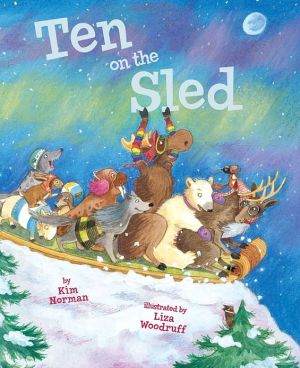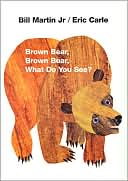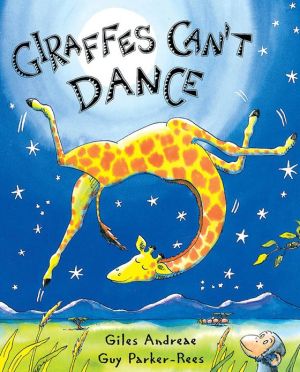Black Cowboy, Wild Horses
Bob Lemmons is famous for his ability to track wild horses. He rides his horse, Warrior, picks up the trail of mustangs, then runs with them day and night until they accept his presence. Bob and Warrior must then challenge the stallion for leadership of the wild herd. A victorious Bob leads the mustangs across the wide plains and for one last spectacular run before guiding them into the corral. Bob's job is done, but he dreams of galloping with Warrior forever-to where the sky and land meet....
Search in google:
Bob Lemmons is famous for his ability to track wild horses. He rides his horse, Warrior, picks up the trail of mustangs, then runs with them day and night until they accept his presence. Bob and Warrior must then challenge the stallion for leadership of the wild herd. A victorious Bob leads the mustangs across the wide plains and for one last spectacular run before guiding them into the corral. Bob's job is done, but he dreams of galloping with Warrior forever-to where the sky and land meet. This splendid collaboration by an award-winning team captures the beauty and harshness of the frontier, a boundless arena for the struggle between freedom and survival. Based on accounts of Bob Lemmons, a former slave, Black Cowboy, Wild Horses has been rewritten as a picture book by Julius Lester from his story The Man Who Was a Horse in Long Journey Home, first published by Dial in 1972.Publishers WeeklyA spirit of freedom pervades the pages of this picture book, accompanied by the sound of thundering hooves and the feel of the heat and dust of the plains. Based on an incident in the life of Texas cowboy Bob Lemmons, the tale centers on his success in corralling a herd of wild mustangs with only the aid of his horse. Possessed of a legendary tracking ability, Lemmons, a former slave, follows the drove day and night, infiltrating the herd astride his black steed, Warrior. In a dramatic climax, he defeats the mustang stallion for possession of the herd. Lester and Pinkney, who previously collaborated on John Henry and Sam and the Tigers, reunite in an impressive display of teamwork, transporting readers, through the alchemy of visual and verbal imagery, to the heart of the action. The resulting sense of immediacy offers a vivid taste of the cowboy life, whether it's hunkering down all night during a sluicing rain or riding under the wide-open skies. Lester studs his seamless prose with powerful descriptions, such as when a hawk is "suspended on cold threads of unseen winds," or the mustangs sweep toward the corral as "a dark surge of flesh flashing across the plains like black lightning." The fluid brushwork of Pinkney's watercolors seem tailor-made for the flow of muscle, mane and tail of wild mustangs galloping across the prairie. Notable for the light it sheds on a fascinating slice of Americana, this book is essential for anyone interested in the Wild West. Ages 5-up. (May)
An Author's Note by Julius Lester This is a true story based on the life of a black cowboy named Bob Lemmons. He is mentioned in two books: The Adventures of the Negro Cowboys by Philip Durham and The Mustangs by Everett L. Jones and J. Frank Dobie. In the latter there is an interview with Lemmons when he was in his eighties. I told this story first in my book Long Journey Home: Stories from Black History (Dial Books, 1972, reissued 1993). The present version was inspired by a fascination with black cowboys that Jerry Pinkney and I discovered we share. Jerry sent me a copy of a 1975 calendar he illustrated depicting blacks in the West and said he would love to do a book about black cowboys. I sent him a copy of Long Journey Home and asked him to read 'The Man Who Was a Horse.' He read it and said he would love to illustrate it, but thought it would be very difficult to rewrite the story as a picture book. I didn't tell him that I thought the real hard work was going to be the illustrations. May we each keep believing that our job is the easier one. An Author's Note by Jerry Pinkney As a young boy growing up in Philadelphia, PA, I dreamed of exploring the Wild West. My friends and I played cowboys, and with great enthusiasm we became characters portrayed on the silver screen. What fun we had. Today I wonder how our role-playing and self-esteem would have been enhanced had we known about Nat Love, the black cowboy, Bill Pickett, the black rodeo star, and the fact that one out of three cowboys was black or Mexican. Some thirty years later I got my chance to play cowboys again, with a project I created for an African-American history calendar. The subject was the Black West, and it was that calendar I shared with Julius Lester. So again, some twenty-two years later I am playing cowboys. This time I am illustrating the story of Bob Lemmons, herding wild horses on the western plains. My gear is the finely crafted text written by Julius and my ever increasing appetite for American history. It is also the mounting research on this nation's true West, with — of course — cowboys of color. Published by Dial Books A member of Penguin Putnam Inc.\ 375 Hudson Street — New York, New York 10014\ Text copyright © 1998 by Julius Lester Pictures copyright © 1998 by Jerry Pinkney All rights reserved
\ Publishers Weekly\ - Publisher's Weekly\ A spirit of freedom pervades the pages of this picture book, accompanied by the sound of thundering hooves and the feel of the heat and dust of the plains. Based on an incident in the life of Texas cowboy Bob Lemmons, the tale centers on his success in corralling a herd of wild mustangs with only the aid of his horse. Possessed of a legendary tracking ability, Lemmons, a former slave, follows the drove day and night, infiltrating the herd astride his black steed, Warrior. In a dramatic climax, he defeats the mustang stallion for possession of the herd. Lester and Pinkney, who previously collaborated on John Henry and Sam and the Tigers, reunite in an impressive display of teamwork, transporting readers, through the alchemy of visual and verbal imagery, to the heart of the action. The resulting sense of immediacy offers a vivid taste of the cowboy life, whether it's hunkering down all night during a sluicing rain or riding under the wide-open skies. Lester studs his seamless prose with powerful descriptions, such as when a hawk is "suspended on cold threads of unseen winds," or the mustangs sweep toward the corral as "a dark surge of flesh flashing across the plains like black lightning." The fluid brushwork of Pinkney's watercolors seem tailor-made for the flow of muscle, mane and tail of wild mustangs galloping across the prairie. Notable for the light it sheds on a fascinating slice of Americana, this book is essential for anyone interested in the Wild West. Ages 5-up. (May)\ \ \ \ \ Children's Literature\ - Marilyn Courtot\ Bob Lemmons, a former slave, spent his days on the vast plains as a cowboy. His knowledge and ability with horses was legendary. Lester's poetic text recounts Bob's single-handed capture of a wild mustang herd. Bob succeeded because he understood the animals, and with his own horse Warrior was able to become the herd leader. The vastness of the sky and land and the beauty of magnificent horses are gloriously depicted in Pinkney's watercolor and pencil illustrations. The mystical quality also comes through as phantom horses race across the sky.\ \ \ School Library JournalGr 2-4Pinkney and Lester add a picture-book chapter to the lore of this nation's "true West" with the retelling of a story of a wild horse hunt by the black cowboy Bob Lemmons. He and his stallion, Warrior, wander on the prairie until they find the tracks of the animals they seek. Bob then spends days in a very slow approach to the herd. Horse and rider finally join the herd and are accepted by the wild horses, until at last Bob challenges the lead stallion for control. On Warrior's back, he fights the stallion, defeats him, and then leads the animals into captivity in the ranch corral. Throughout, both text and pictures emphasize the blending of all life. The linkages between the cowboy, the animals, and the natural world are so strong that lines separating them are blurred. Lester and Pinkney's stated aims were to recast their childhood love of cowboys and the Old West with more recent historical research into the contributions of men of color, both black and Hispanic. They have done that, and achieved something else as well: youngsters will reflect on the relationships between humans and other animals. Pinkney's pictures were never better, making it all the more unfortunate that text boxes cover some of the action. Lester's overuse of metaphor is also a drawback. Still, this book will inspire heavy-duty thinking on the part of young readers.Ruth Semrau, formerly at Lovejoy School, Allen, TX\ \ \ \ \ Horn Book MagazineIn vivid, poetic prose, Lester tells the tale of a uniquely talented man, cowboy Bob Lemmons. Lester first told the story as "The Man Who Was a Horse" in his collection Long Journey Home: Stories from Black History (rev. 4/73). While that version includes more historical background and detailed information on Lemmons's life, this picture-book narrative appropriately conveys Lemmons's character through a particular (fictionalized) incident, telling a well-shaped tale with a dramatic climax. A former slave with no formal education, Lemmons possessed the unusual ability to bring in a herd of wild mustangs alone. Lester recounts how Lemmons and his stallion Warrior patiently follow a wild herd at a distance until they are accepted by both smell and sight: "Bob could make the horses think he was one of them-because he was." After days of running and sleeping with the horses on the open plains, Bob and Warrior challenge the mustang stallion and drive him away, becoming the herd's new leader. Pinkney's magnificent earth-toned paintings bring to life the wild beauty of the horses and the western plains, the dark drama of a nighttime thunderstorm, the fierce battle of the stallions. Notes from the two creators give a history of the book and reveal their shared fascination with black cowboys. This latest collaboration evokes the legendary stature of one of these real men, as well as the majesty and romance of the Wild West.\ \ \ \ \ Kirkus ReviewsThe creators of Sam and the Tigers (1996) proffer this fact-based tale of a black cowboy named Bob Lemmons, famed for his ability to track and capture herds of wild mustangs. Within these pages he follows a herd until he's an accepted member, then, with his horse, Warrior, successfully challenges the herd's stallion for leadership. Lester reworks a passage from his Long Journey Home (1972, 1993), and if he sometimes gets carried away with imagery ("He stared at the land stretching wide as love in every direction. The sky was curved as if it were a lap on which the earth lay napping like a curled cat. High above, a hawk was suspended on cold threads of unseen winds"), it makes for colorful, exuberant storytelling. The text is ably matched by Pinkney's big, dappled watercolor scenes of open prairie and muscular, galloping horses. Lemmons may not have the name recognition of Nat Love or Bill Pickett, but his exploits were no less spectacular. (Picture book. 8-10)\ \
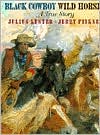

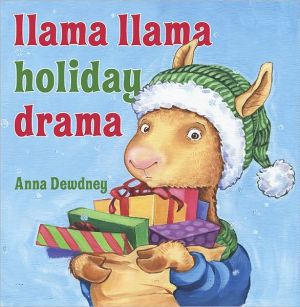
![Tickle Monster Laughter Kit [With Tickle Mitts] Tickle Monster Laughter Kit [With Tickle Mitts]](/application/data/covers/98/35/9781932319835.jpg)


